THE KING OF SKATS IN SARATOGA PARK (1904)

******************************************************************************************************************************** Brownstone Detectives investigates the history of our clients’ homes. The story you are about to read was composed from research conducted in the course of one of those investigations. Do you know the history of YOUR house? ******************************************************************************************************************************** Starting around 1904-1905, Saratoga Park began to develop a sinister reputation, as young men began using it for the purposes of selling illegal narcotics, assaulting park-goers, and simply loafing about and insulting anyone who walked into the park. This was a new phenomenon to the people of the district who did not understand how or why the neighborhood children had begun to disrespect their elders in such a way. One article of the time blamed the parents as much as the boys. They interpreted the occurences as the acts of disaffected sons of respectable families who had little to do with their time, were not forced to take responsibility for their actions, and could not be held chargeable by the police because their parents, who were influential, did not want their sons’ names in the papers: “These young men were night hawks. Sons of respectable, but indulgent, parents, they did about as they liked. They worked always in small groups and gloried in the thought that they could lick any cop which came their way. The groups would assemble on some street corner near the park and use insulting language to girls and women passing.” An indication of what was to come played out in the newspapers between 1905 and 1909, […]
THE ROMANCE OF A BOTTLE NOTE (1902)

******************************************************************************************************************************** Brownstone Detectives investigates the history of our clients’ homes. The story you are about to read was composed from research conducted in the course of one of those investigations. Do you know the history of YOUR house? ******************************************************************************************************************************** Floating along in the water, down the southern shore of Martha’s Vineyard, came bobbing a corked green beer bottle with what looked suspiciously like a note inside. Coaxing the bottle to shore with a stick, Harold A. Thomas barely got his shoes wet in retrieving the missive. It was certainly a distress call from the survivors of a sunken ship marooned on some unknown exotic island. Upon uncorking the bottle, Thomas fished the note out with some effort, unrolled the coarse paper, and began to read the nicely penned lines therein: “On board the good old ship Southwark the first day of September, in the year of our Lord nineteen hundred and two, we, the ‘Smart Set,’ have assembled in Cabin No. 5, to celebrate the last night of a most agreeable voyage.’ Not the note that Thomas had expected, his hopes of saving the daughter of an ambassador or the owner of a large and profitable railroad company, were suitably dashed against those great rocks that had so recently been the cause of the imagined marooning. Thomas, hoping to salvage something from his discovery, read on. “A reward of $5 will be given to any mortal or immortal who will bring this note to Howard S. Parker, 414 Madison street, […]
“PEACE” COMES TO STUYVESANT EAST (1921)
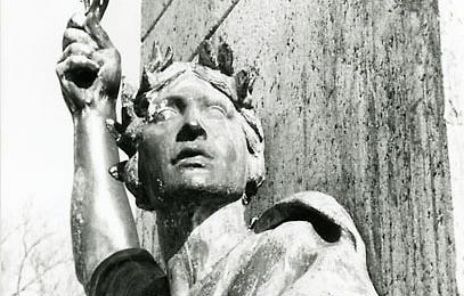
******************************************************************************************************************************** Brownstone Detectives investigates the history of our clients’ homes. The story you are about to read was composed from research conducted in the course of one of those investigations. Do you know the history of YOUR house? ******************************************************************************************************************************** In 2014, The Brownstone Detectives partnered with the New York City Parks Department to help celebrate the lives of the servicemembers of Bedford-Stuyvesant Heights who made the ultimate sacrifice during the Great War. We researched these heroes to locate pictures, stories, and their descendants to be brought together for a ceremony that dedicated a new “Victory and Peace” war memorial at Saratoga Park. ******************************************************************************************************************************** After nearly three years of mourning, Stuyvesant East was ready to remember its dead in a very public way. On 11 September 1921, after neighbors in the eastern section of Stuyvesant Heights had spent two years collecting the $6,000 necessary to defray the cost of a war memorial, the Victory and Peace statue was finally delivered to Saratoga Square. With great pomp and circumstance, amid a good deal of political speech-making and the delivery of grandiose eulogies and war veterans celebrating the war’s end, the 6-ton war memorial, sculpted by James Novelli, was unveiled at the Saratoga Avenue entrance to the Saratoga Square in front of more than 3,000 witnesses. “The eastern end of the park had been appropriately decorated with the monument draped in large American flags which at the presentation were dropped by two servicemembers presenting to view the ten-foot Milford granite memorial.” Revealed was […]
MACON STREET VS. CHARLIE CHAPLIN (1913)
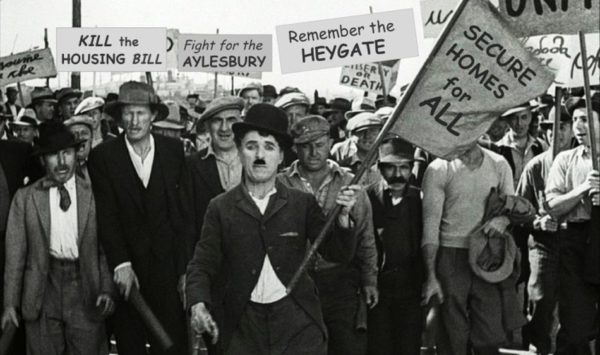
******************************************************************************************************************************** Brownstone Detectives investigates the history of our clients’ homes. The story you are about to read was composed from research conducted in the course of one of those investigations. Do you know the history of YOUR house? ******************************************************************************************************************************** In 1913, “Charlie Chaplin” was set to hit Bed-Stuy – in a big way. Let me explain. The residents of Stuyvesant Heights – 100 years ago – were concerned about any proposed construction developments that might encroach upon the way of life to which they’d grown accustomed. New people were moving into the neighborhood, new businesses opening up, and the residents felt they were losing control of what was going on around them. Specifically, they were justifiably troubled with the type of buildings the local developers might be planning to construct in their midst. In 1913, it was the movie houses. NOT IN MY BACKYARD! The construction of a “moving picture show” on Macon Street (near Lewis Avenue), was so unpopular, in fact, that its residents would take drastic measures against the proposal to build one “directly opposite the Public Library in Lewis Avenue.” The new theater was to go up on the northwest corner of Macon Street and Lewis Avenue, where a 3-story wooden structure (with a 2-story addition at back) had existed since the last century. Surrounded by their “fine residences,” the residents expected the lot to attract an establishment that would be more in keeping with the status of the neighborhood. When residents discovered, though, that the owners […]
The Campfire Girl & The Marxist, Pt. II (1915)
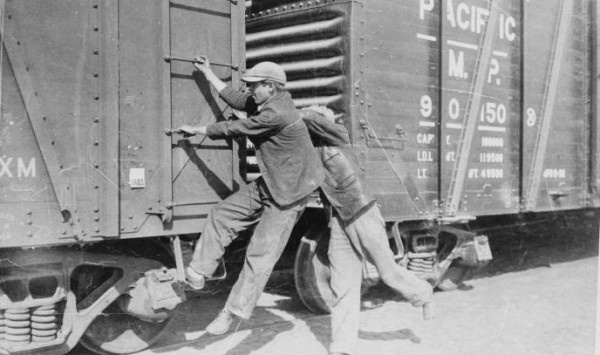
(And now, the thrilling conclusion of – “The Campfire Girl & The Marxist.”) THE ESCAPE PLAN The escape plan seemed so simple in its design that it was later wondered how it ever worked. Although the overall scheme of hopping freight trains headed west was plotted intimately with maps and the help of encyclopedias, the actual disguise plans and methods for eluding authorities was rather, well, sophomoric. But it worked. It seems that Max went down to a store on Fulton street, and there bought for Viola a pair of brown knickerbockers, a Norfolk jacket and a gray cap with a peak on it like a bicycle cap. Viola would look like a boy bicyclist. “He just guessed at the measurements,” said Bostick, adding with a knowing grin, “and I must say Max was a fine guesser.” When Max, Viola, and Andrew arrived at the Kowenhoven station of the Long Island Rail Road – for Andrew was an accomplice in their escape – Max made a suggestion that must have rankled Viola – that, to aid in their escape, she could roll her hair up and hide it under her cap. Viola, however, was having none of that. If she was going to be a boy, she was going to go the distance. She stated firmly that she wanted her curly locks shorn completely. So, there, under the archway of a railroad bridge, Max snipped off six “curls.” He kept three, bound in a handkerchief, and gave three of them […]
The Campfire Girl & The Marxist (1915)
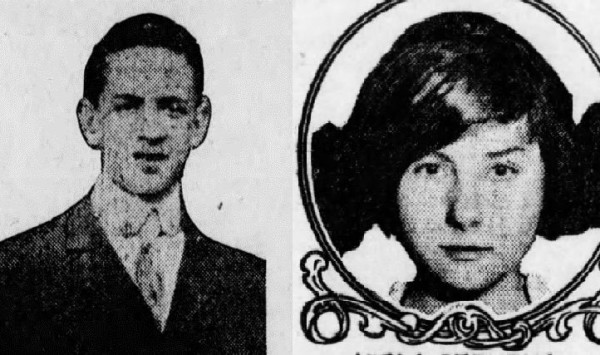
******************************************************************************************************************************** Brownstone Detectives investigates the history of our clients’ homes. The story you are about to read was composed from research conducted in the course of one of those investigations. Do you know the history of YOUR house? ******************************************************************************************************************************** If nature were a fair goddess, she would have made some girls boys and some boys girls. Although most teenagers often go into their young adulthood trying to determine just who they are, some know it instinctively and early on from experiences that leave indelible etchings upon their souls. Viola Stevens was just such a girl. Although she was new to Hancock Street – and a bit serious for her years – she had initially proved herself to be very much like all of the other girls on the block. She loved nature, had boy “friends,” was a Campfire Girl, and had even, after some time, became a Woodcraft Girl. In other words, she spent nearly all of her 15 years doing “girl” things. In 1915, though, all of that changed when she did a very “boy” thing, which terrified her mother and excited the entire borough. She ran away – with a socialist. A MOTHER’S POINT OF VIEW No, of course. The “running away” bit was the actual catastrophe as far as her mother was concerned. The fact that the boy was a socialist simply added some salt to the wound. Any mother would tell you that her daughter is her world and that she is pure as the driven […]
WHAT EVIL LURKS AT No. 666 MACON? (1903)
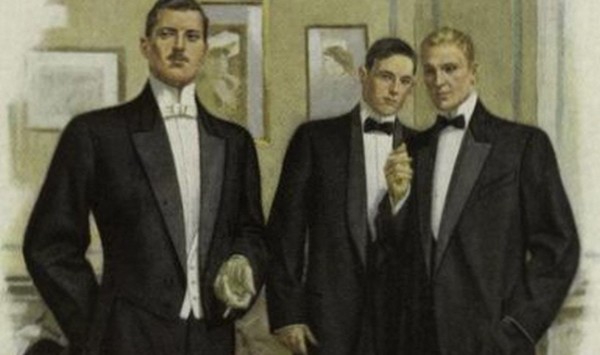
******************************************************************************************************************************** Brownstone Detectives investigates the history of our clients’ homes. The story you are about to read was composed from research conducted in the course of one of those investigations. Do you know the history of YOUR house? ******************************************************************************************************************************** Back in 1903, society saw less evil in the world. Especially in its own neighborhoods. Some people, though, saw it all around them. It was not certain which vantage point drove Ebba Stolpe, but she clearly saw the gathering forces of darkness over 666 Macon Street. LITTLE AMANDA STOLPE Little Amanda Stolpe (Ebba’s younger sister) was just 11 years old when her father died. For reasons that are not clear, Amanda’s step-mother decided that Amanda could be better taken care of by another family. The Bodines, who took little Amanda in, were John and his purported “wife,” Augusta. They were the caretakers of the Sixteenth Assembly District Republican Clubhouse – commonly referred to as the King’s County Men’s Club. Located at 666 Macon Street, in a 2-story and basement brownstone, the King’s County Republican Club was one of the “best known political clubs in Brooklyn,” according to the Brooklyn Daily Eagle, and included amongst its members “many men well known in the business and public life of the city.” Well-known or not, when Ebba found out that her 11-year-old sister was living and working – for Amanda helped with the cleaning and the sweeping at the clubhouse – at the King’s County Republican Club, she was none too pleased. She and […]
TRUST ME, I’M A…SHOEMAKER? (1900)
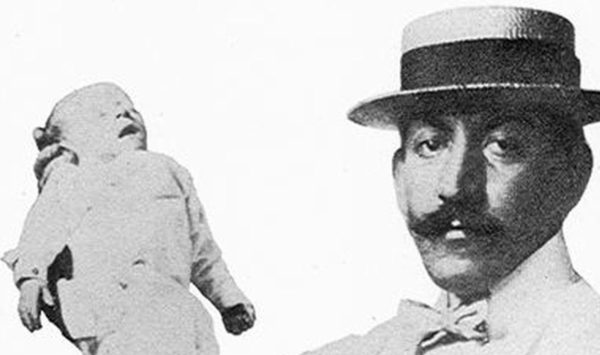
******************************************************************************************************************************** Brownstone Detectives investigates the history of our clients’ homes. The story you are about to read was composed from research conducted in the course of one of those investigations. Do you know the history of YOUR house? ******************************************************************************************************************************** If you stepped into the doctor’s office at 635 Herkimer Street early in 1900, you would have been greeted with the kindly smile of Dr. Walter C. Falk. Dr. Falk would have listened to your heartbeat, asked you a number of questions in a slight German accent, charged you an office visit fee, and then, after disappearing and the reappearing from a back room, prescribed you any number of medications – which he would, of course, sell to you directly. Over the coming weeks, your ailment may or may have not gone away. If it did, it was most certainly not due to the medication for which you paid and took faithfully. For you see, it was very soon discovered that “Dr.” Falk, who had only been in town for approximately eight months, was not a doctor at all. He was a “shoe cutter.” “DR.” FALK, I PRESUME? Falk noted on the 1900 Federal Census that he had been born in Germany in 1848. He was 51 years old at the time and was currently a lodger at the boarding house at 635 Herkimer Street, where he lived with seven other men and a small family. An 1892 New York State Census record, though, showed him living in the town of […]
MOOKIE, A CHILD BRIDE & A PET HORSE

******************************************************************************************************************************** Brownstone Detectives investigates the history of our clients’ homes. The story you are about to read was composed from research conducted in the course of one of those investigations. Do you know the history of YOUR house? ******************************************************************************************************************************** Not much exciting took place at 173 Stuyvesant Avenue throughout its 140+ year history – unless you count 1) Spike Lee’s movie, “Do The Right Thing,” 2) a pet horse, or 3) a child bride. MOOKIE’S CRIB The brownstone where director Spike Lee’s character “Mookie” lived in the 1989 movie, “Do The Right Thing,” 173 Stuyvesant Avenue sits at the corner of Quincy Street. Filmed at various additional locations in Bedford-Stuyvesant – but mostly on Stuyvesant Avenue – “Do The Right Thing” was a commercial success that featured the debuts of Martin Lawrence and Rosie Perez. A few years back, Spike Lee was in the news not only for his vilification of his old neighborhood’s “gentrifiers,” but also for his own request for a change in Bedford-Stuyvesant. Lee saw that change after he lobbied to have Stuyvesant Avenue – between Lexington Avenue And Quincy Street – renamed “Do The Right Thing Way.” YES, VIRGINIA, THERE WAS A HISTORY BEFORE SPIKE LEE Built at some point before 1877, it was listed for rent that year as a “partially furnished,” “two story basement brown stone house.” The owners included a rather interestingly worded phrase in this ad in the Brooklyn Daily Eagle, stating that they were willing to “let the whole or part […]
WONG SING BOW’S WHITE WIFE MINNIE (1877)
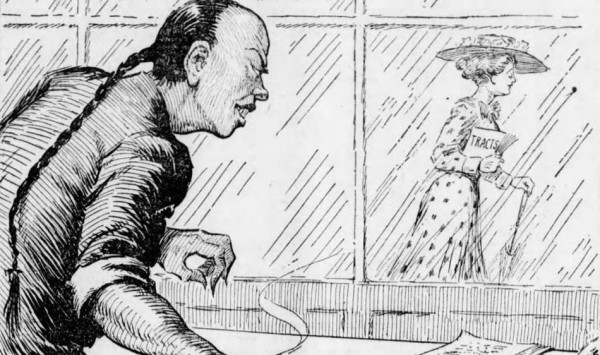
******************************************************************************************************************************** Brownstone Detectives investigates the history of our clients’ homes. The story you are about to read was composed from research conducted in the course of one of those investigations. Do you know the history of YOUR house? ******************************************************************************************************************************** In 1886, the life that Wong Sing Bow had been building up for years began to crumble before his eyes. A naturalized U.S. citizen, Wong Sing had been born “a subject of the emperor of China.” But he had been in America “long enough to save considerable money and to appreciate the beauty of Irish girls,” said one paper of the time. Wong Sing spoke English fluently and was often called upon by the authorities to interpret. With all that Wong Sing had going for him, it had originally seemed likely that he was going to have a good life. But this was the 1800s. And Wong Sing was Chinese. ANTI-CHINESE PREJUDICE IN 19TH CENTURY BROOKLYN After Wong Sing’s arrival in the U.S. around 1870, according to one paper, “the celestial youth immediately fitted himself in the groove of circumstances. “He decided to become intensely American. He shaved his cue off, doffed his Chinese garb, proclaimed his intention to become a citizen, and went to Sunday school ‘all samme like Melican man.’” Apparently, the papers, like most Americans, had no politically correct bent in those days. But the Chinese were located squarely at the bottom of the social construct – just slightly beneath the Irish and the Germans – and so […]